1960'S TEK
Gepard's 35mm Cannons Blast Russian Drones Out Of The Sky In First-Person VideoOliver Parken
Fri, September 8, 2023
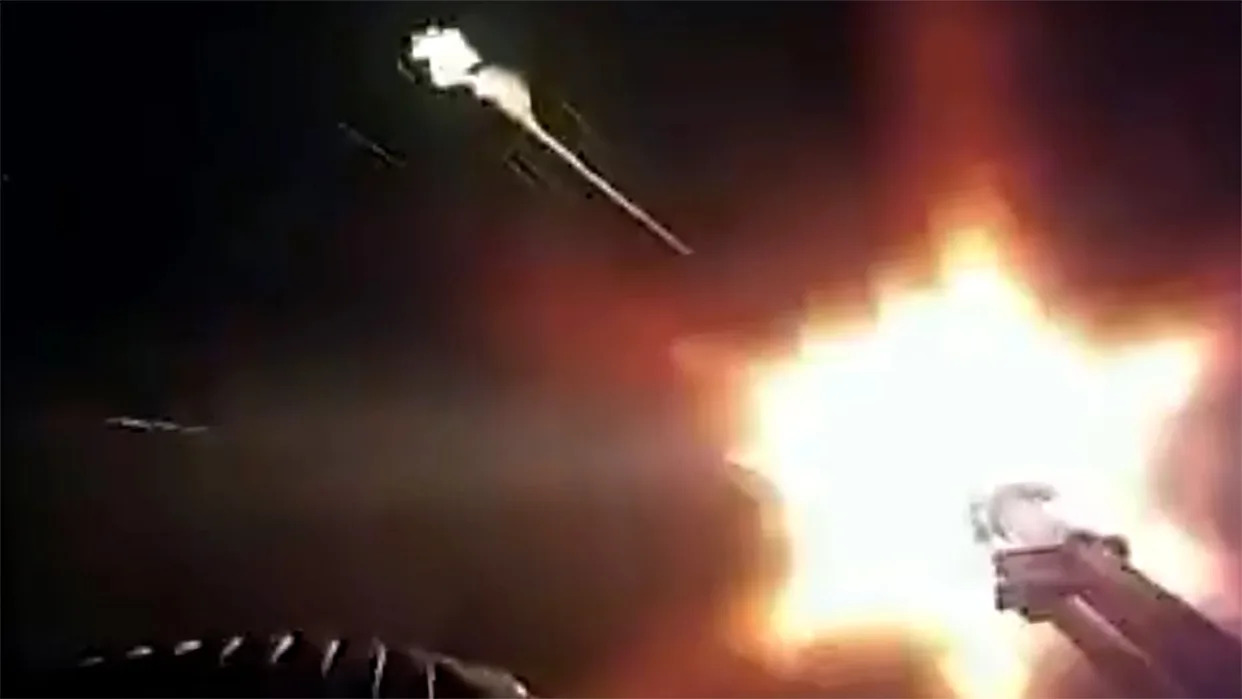
Gerpard Shahed 136 night
A new video shows just what it looks like from a first-person point of view when a German-made Gepard self-propelled anti-aircraft guns (SPAAG) lets loose a barrage 35mm shells from its twin barrels and splashes a Shahed-136 kamikaze drone.
The video is a reminder of the very important role that the Gepards have played so far in Ukraine's air defense. The Gepard has proved highly effective against Russian drones, and in some cases cruise missiles, owing to its intended use in a point defense role against various low-flying aerial targets.
https://twitter.com/Archer83Able/status/1699782851724792197?s=20
According to Ukraine’s Southern Air Command, which posted the video to its official Facebook page yesterday, the footage depicts one of the systems shooting down two of Russia’s Iranian-designed Shahed-series kamikaze drones. The caption reads: “Video of the combat work of the soldiers of the ‘Southern’ air command against the ‘Shahed-136/131’ attack UAVs on the night of September 7, 2023 in Odesa [Oblast, southern Ukraine]! The German ‘Gepard’ hunted down enemy ‘shahedis’!” Iran has been providing Russia with Shahed drones since September last year.
Based on the chassis of the Leopard 1 main battle tank, Gepards — which translates to cheetah in English — feature twin radar-aimed 35mm automatic cannons, mounted on a single turret. The German variant sports an S-band search radar and a Ku-band tracking radar. These radars are critical to the Gepard's ability to locate, track, and engage targets at night and amid poor weather conditions. As we've highlighted in the past, many of Russia's Iranian-made kamikaze drone strikes occur at night to help improve the types' survivability.
Examples of how Germany's Gepards have been put to use in Ukraine against low-flying aerial threats can be seen below.
https://www.youtube.com/watch?v=_PWJ97KcnmA https://twitter.com/JimmySecUK/status/1599808349981138945?s=20
To date, six Gepards have been delivered to Ukraine by Germany, with another 46 pending delivery. Germany announced as far back as April 2022 that it would send a number of its since retired Gepards to Ukraine, which were originally produced for what was then the West German military during the Cold War. Visual confirmation that German Gepards were being used on the battlefield in Ukraine came later in August 2022.

A German Gepard variant. Hans-Hermann Bühling via Wikimedia Commons, CC BY-SA 3.0
More recently, the U.S. Army has bankrolled the transfer of an undisclosed number of Gerpards to Ukraine from Jordan, in a contract worth $118,375,740. Unlike the German variant, Jordan’s stockpile of Gepards are ex-Dutch. Acquiring a total of 95 vehicles, starting in the 1970s, the Dutch Armed Force’s Gepards feature a visually distinct radar configuration compared to their German counterparts. Dutch Gepards boast an X-band search radar and a tracking radar that can operate in the X and Ka bands. In 2013, the Netherlands agreed to sell 60 retired Gepards to Jordan as well as 350,000 rounds of 35mm ammunition, amongst other assets.
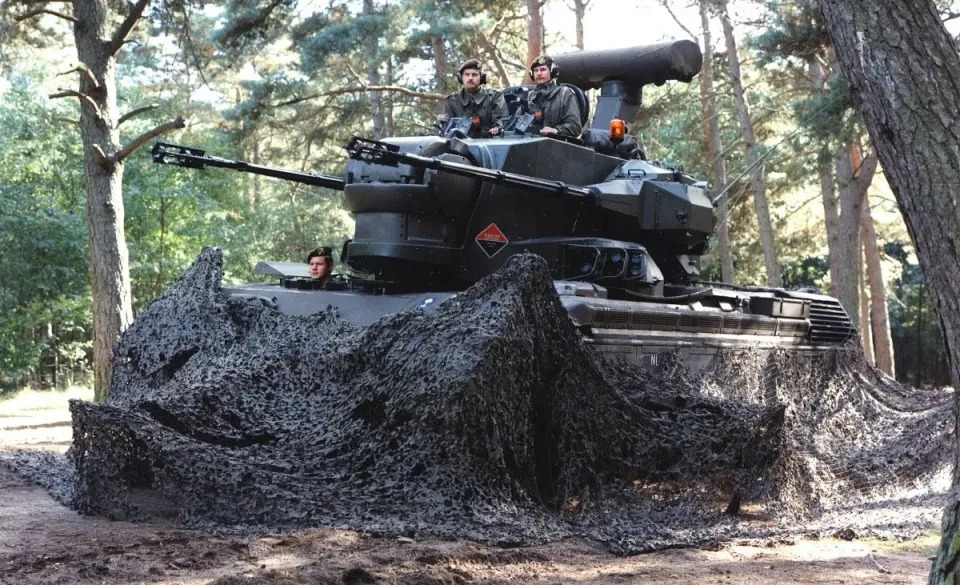
A Dutch Gepard during an exercise in 1990, with its distinctive radars at the front and rear of the turret. Dutch Ministry of Defense
Sourcing the necessary ammunition for Ukraine's German Gepards during the war has proved difficult. As we’ve noted previously, the vehicles' 35mm automatic cannons were produced in Switzerland, as are significant stockpiles of shells for them. That country’s policy of neutrality in regard to the conflict forced the German government to pursue a deal with domestic defense contractor Rheinmetall to restart production of 35mm ammunition earlier this year.
The first batch of said ammunition was recently delivered to Ukraine, with 40,000 rounds promised by the end of 2023 as part of the deal. So far, Germany has delivered 86,122 rounds of Gepard ammunition from Bundeswehr and industry stocks, according to the latest government figures, with 289,920 rounds still to be sent.
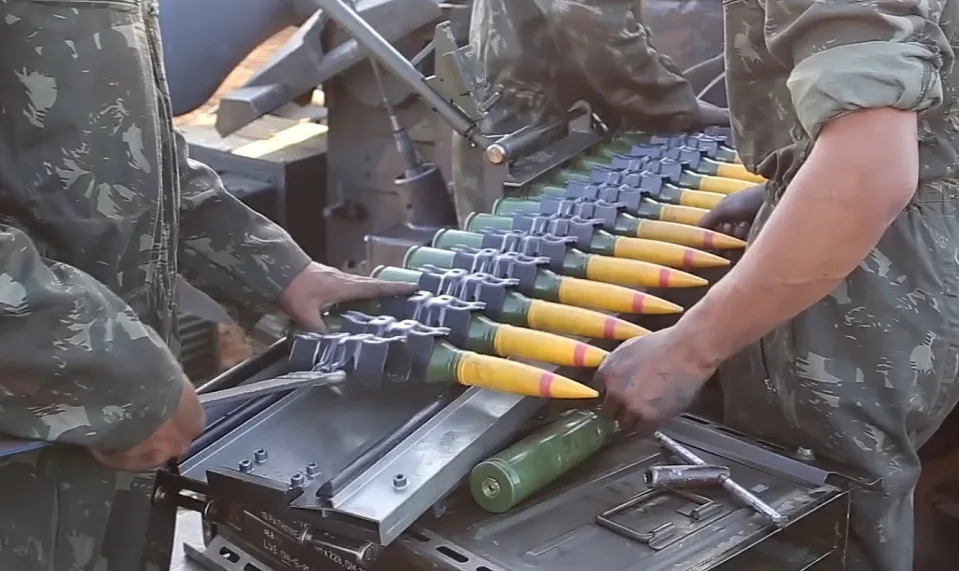
35mm ammunition rounds handled by the military of Brazil. Ministry of Defense of Brazil
Alongside other short-range air defense (SHORAD) capabilities given to Ukraine by Western allies, such as the AN/TWQ-1 Avenger, of which 20 were supplied by the U.S. starting in late 2022, Gepards remain critical assets for the defense of key cities and infrastructure deep within Ukraine. As they are highly mobile, they can easily be maneuvered to forward areas as needed. This is also significant given how few of them have so far arrived in the country.
There is also an important cost factor to their use against loitering munitions such as Shahed kamikaze drones, too, which are relatively cheap for Russia to procure. Shahed-136 drones reportedly cost around $10,000 to $20,000 apiece. The price per-shot against these drones when using Gepard ammunition is far more cost-effective compared to using expensive man-portable air-defense systems (MANPADS) or larger surface-to-air missiles (SAMs).
https://twitter.com/Aviation_Intel/status/1539887496539959296?s=20
The threat of Iranian-designed Kamikaze drones is not going away, either. Russia is standing up full-scale production within its own border in order to make 6,000 more by the summer of 2025.
With the promise of more Gepards to be delivered in the future, and more ammunition for the type on the way, these systems, which were up until recently viewed broadly as antiquated, will continue to play an important role in the defense of Ukraine's skies.
PHOTOS: Step inside one of the US-made Bradley fighting vehicles keeping Ukrainian troops alive through mines and enemy fire
Jake Epstein
Updated Fri, September 8, 2023
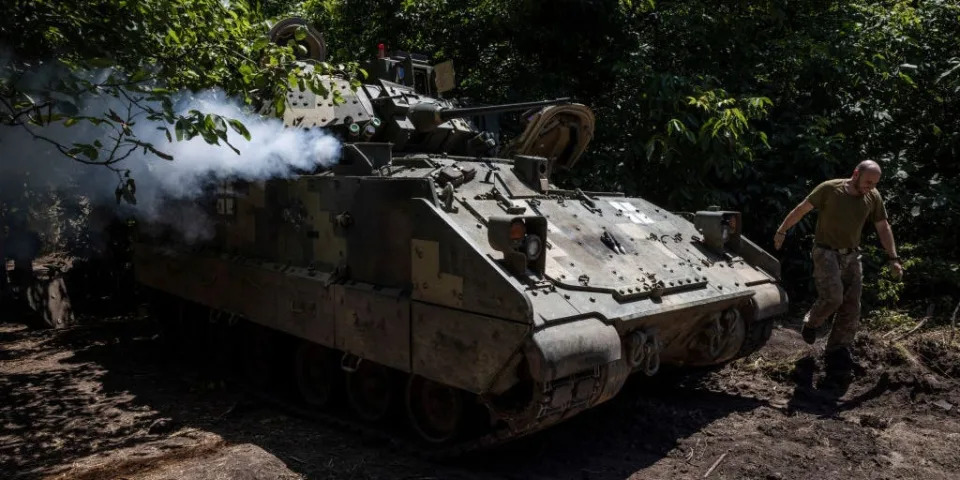
A soldier from Ukraine's 47th Mechanized Brigade runs past a US-made Bradley Fighting Vehicle as the engine is started at a secret workshop in a wooded area in the southern Zaporizhzhia Region.
Updated Fri, September 8, 2023

A soldier from Ukraine's 47th Mechanized Brigade runs past a US-made Bradley Fighting Vehicle as the engine is started at a secret workshop in a wooded area in the southern Zaporizhzhia Region.
Ed Ram/For The Washington Post via Getty Images
US-provided Bradley infantry fighting vehicles have proven to be valuable assets for the Ukrainians.
Kyiv's troops have praised the heavy armor for keeping them alive in combat missions.
New photos show the Bradley's up close and what it looks like on the inside.
Facing incoming Russian fire, minefields, and other hazards, US-made Bradley infantry fighting vehicles have helped keep Ukrainian forces alive as they continue to battle Moscow's troops amid their grinding counteroffensive.
Washington first announced its intent to supply Ukraine with these vehicles earlier this year as part of a massive effort by the West to arm Kyiv with advanced heavy armor. M2A2 Bradleys eventually reached the battlefield in April, just weeks ahead of the much-anticipated offensive, and they have proven to be a valuable asset in the months since.
Ukrainian soldiers have credited the Bradleys with saving their lives in combat, arguing that they would likely be dead had they been riding in a less-advanced Soviet-era vehicle. Bradleys have even been used to help rescue endangered civilians under heavy fire. That said, these vehicles are not indestructible, and they have still fallen victim to Russia's defenses and artillery.
The US has provided a total of 186 Bradleys to Ukraine, according to the latest Pentagon data. But 53 of these have been destroyed, damaged, or abandoned, according to open-source intelligence collected by Oryx. Though it's a possibility, none appear to have been captured by the Russians yet.
Recent photos offer a look inside a Bradley operated by Ukraine's 47th Mechanized Brigade in the southeastern Zaporizhzhia region.
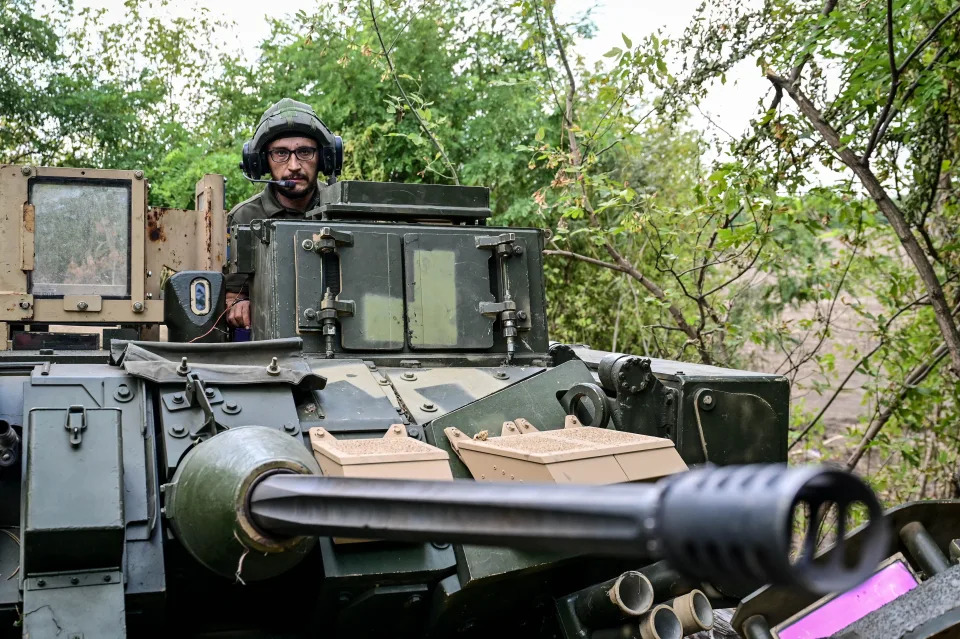
Gunner 'Molfar', 39, a Bradley IFV crew member of the 47th Magura Mechanized Brigade who took part in the fighting to liberate Robotyne village from Russian invaders, stands in the hatch of the vehicle.Dmytro Smolienko/Ukrinform/Future Publishing via Getty Images
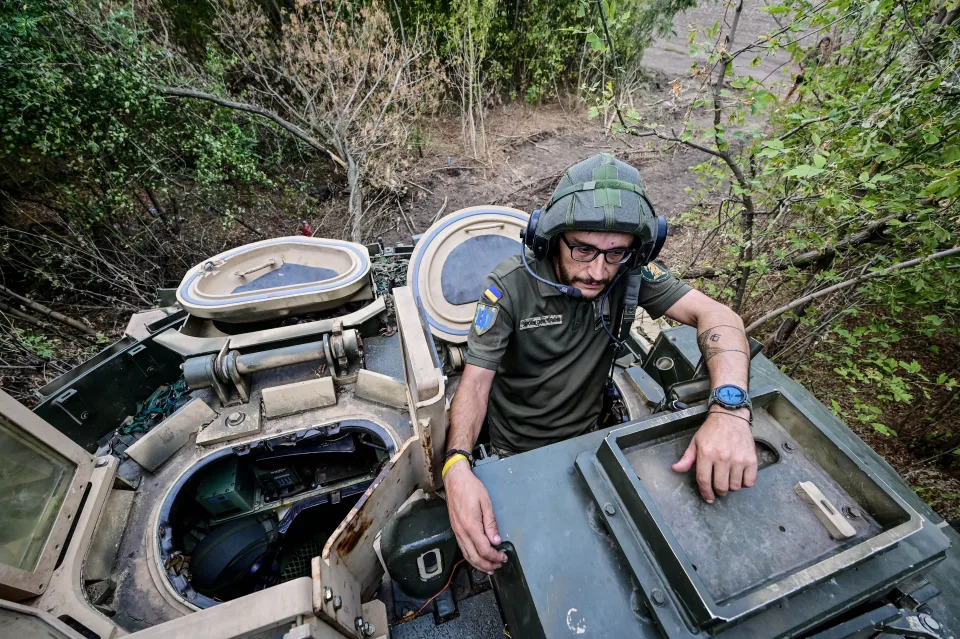
Gunner 'Molfar' stands in the hatch of the Bradley.Dmytro Smolienko/Ukrinform/Future Publishing via Getty Images
The Bradley is a highly maneuverable and quick-moving armored vehicle capable of transporting troops to and from the battlefield, providing them with fire support, and carrying out reconnaissance missions.
Designed and manufactured by BAE Systems as a response to Soviet infantry fighting vehicles, the Bradley entered service in the 1980s. It was deployed to the Gulf War in the 1990s and then again sent to Iraq the following decade.
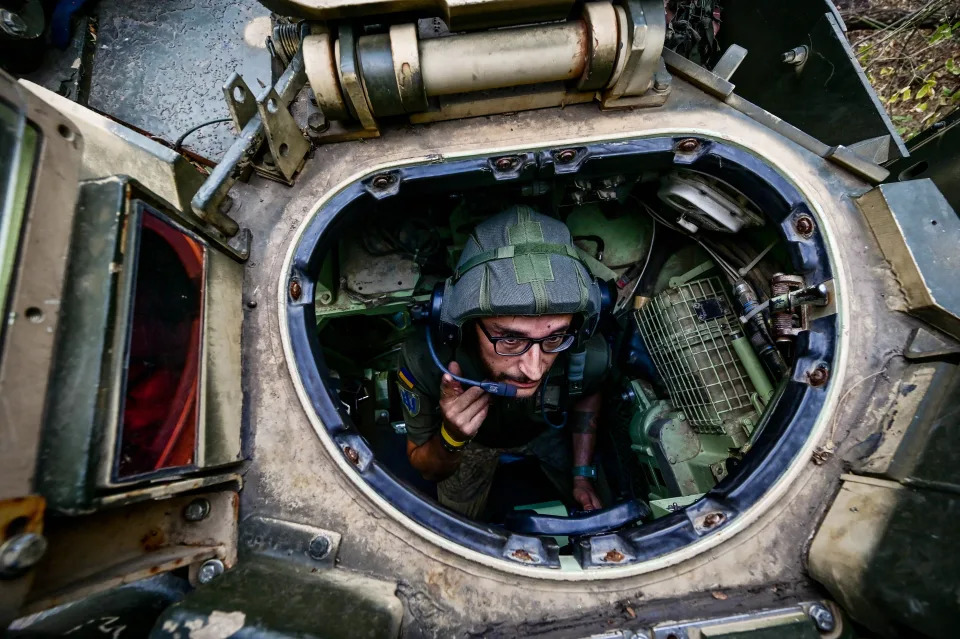
Gunner 'Molfar' is pictured inside the Bradley.Photo by Ukrinform/NurPhoto via Getty Images

Gunner 'Molfar' is pictured inside the Bradley.Dmytro Smolienko/Ukrinform/Future Publishing via Getty Images
The Bradly is a tracked vehicle, so it is sometimes misidentified as a tank. In early January, when it was announced that the US would send Bradleys to Ukraine, Pentagon Press Secretary Air Force Brig. Gen. Pat Ryder was asked by reporters at a briefing to describe how the vehicle is different from a tank.
"It's not a tank, but it's a tank killer. A Bradley is an armored vehicle that has a firepower capability that can deliver troops into combat," he explained. "It will provide a significant boost to Ukraine's already impressive armor capabilities. And we're confident that it will aid them on the battlefield."
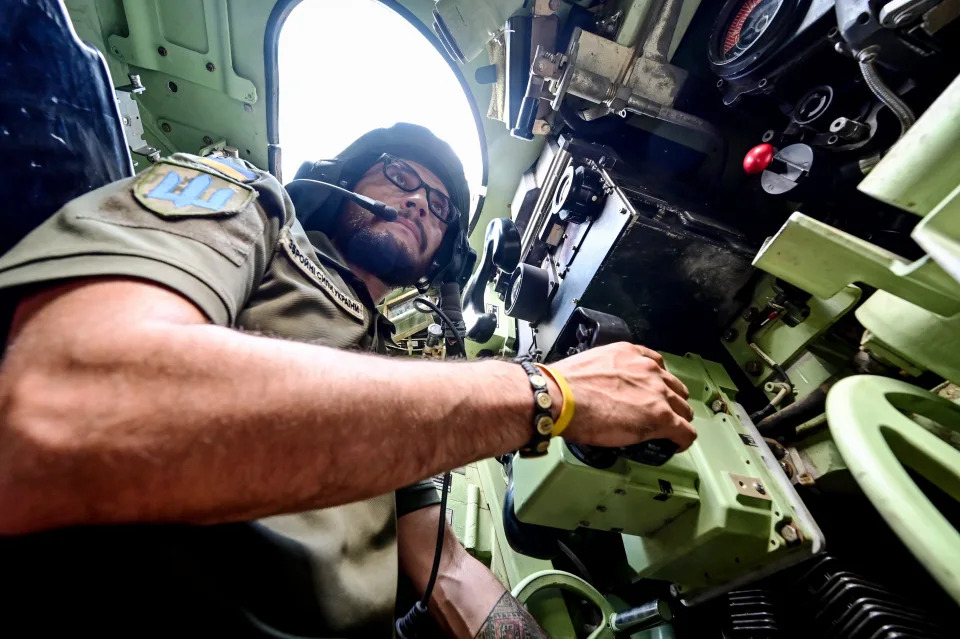
Gunner 'Molfar' is pictured inside the Bradley.Photo by Ukrinform/NurPhoto via Getty Images
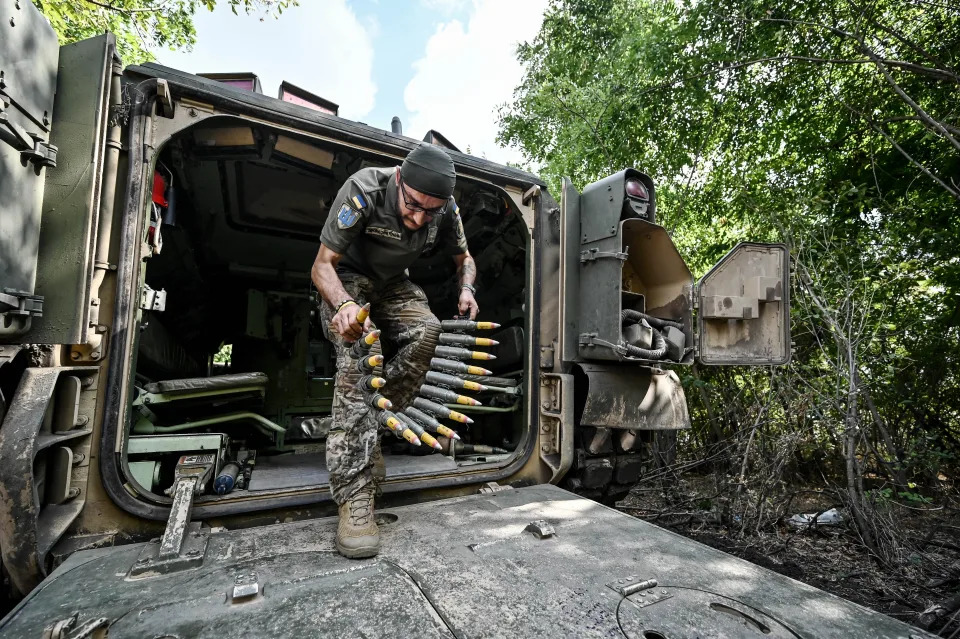
Gunner 'Molfar' carries a belt of munitions.Photo by Ukrinform/NurPhoto via Getty Images
Bradleys are operated by a three-person crew that includes a commander, a driver, a gunner and can carry up to six fully equipped soldiers. The vehicle can travel at speeds of just over 40 mph and has an operational range of around 300 miles.
They are armed with a 25 mm M242 Bushmaster chain gun, a 7.62 mm M240C machine gun, and Tube-Launched, Optically-Tracked, Wire-Guided (TOW) missiles, which can hit armor in the distance. A 1992 Government Accountability Office report on the Bradley's Gulf War performance praised the vehicle, noting that it "proved to be lethal" and its weapons were "effective against a variety of targets."
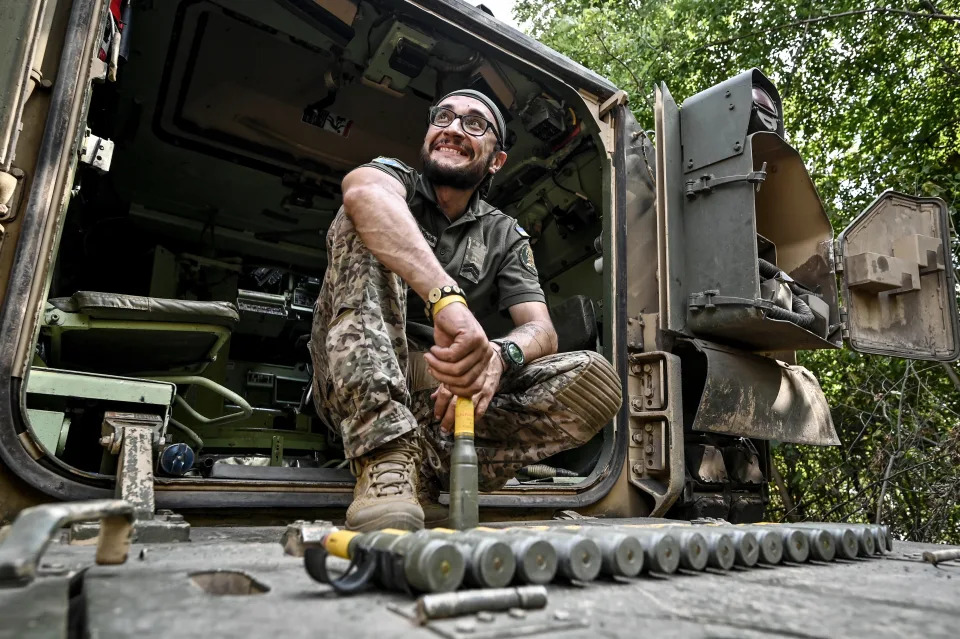
Gunner 'Molfar' is seen inside the vehicle.Photo by Ukrinform/NurPhoto via Getty Images
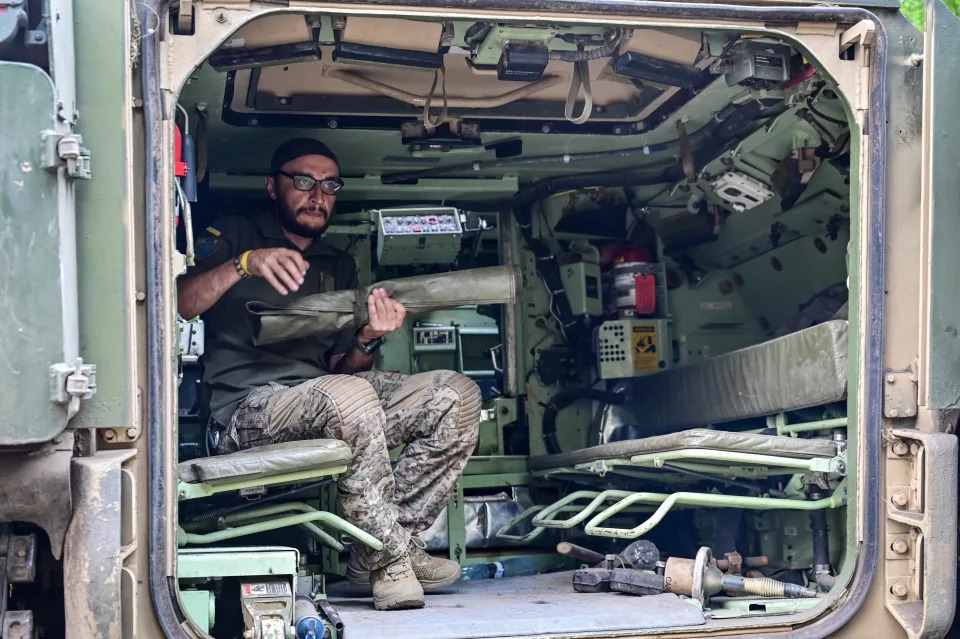
Gunner 'Molfar' is seen inside the Bradley.Dmytro Smolienko / Ukrinform/Future Publishing via Getty Images
According to the Pentagon's inventory of security assistance to Ukraine, which was updated this week, the US has sent over 7,000 TOW missiles and more than 1.8 million rounds of 25 mm ammunition.
This weaponry is just a small component of the nearly $44 billion in military aid Washington has provided since Russia launched its full-scale invasion in February 2022. The Biden administration has also sent nearly 500 Stryker and M113 armored personnel carriers, as well as drones, artillery, air-defense capabilities, and advanced rocket systems.

Gunner 'Molfar' is pictured inside the Bradley.Dmytro Smolienko / Ukrinform/Future Publishing via Getty Images
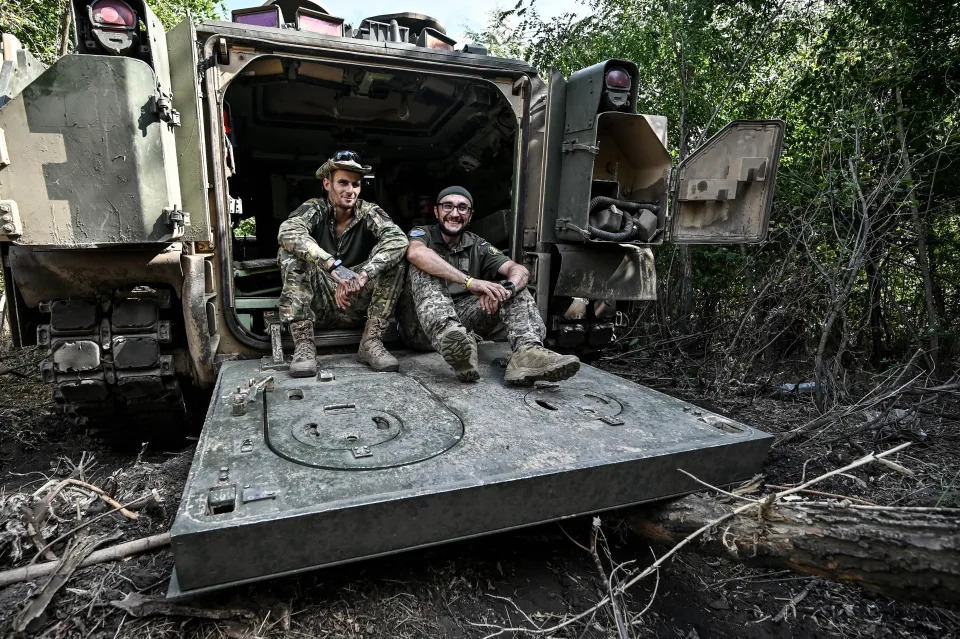
Gunner 'Molfar' (R) and mechanic and driver 'Revo.'Dmytro Smolienko / Ukrinform/Future Publishing via Getty Images
In the Zaporizhzhia region, where these photos were taken, Ukrainian forces have started gaining momentum against Russia's formidable defensive lines and fortifications. There, Kyiv's troops have managed to carve out a small pocket of liberated territory south of Orikhiv, battling through minefields, anti-tank ditches, and dragon's teeth obstacles.
Though Ukraine launched offensives in multiple directions along the sprawling front line, Kyiv's goal for this particular axis of attack seems to be to fight its way down to the Sea of Azov, where it ultimately hopes to divide Russian-held land and sever the link between occupied regions in the east and south.
US-provided Bradley infantry fighting vehicles have proven to be valuable assets for the Ukrainians.
Kyiv's troops have praised the heavy armor for keeping them alive in combat missions.
New photos show the Bradley's up close and what it looks like on the inside.
Facing incoming Russian fire, minefields, and other hazards, US-made Bradley infantry fighting vehicles have helped keep Ukrainian forces alive as they continue to battle Moscow's troops amid their grinding counteroffensive.
Washington first announced its intent to supply Ukraine with these vehicles earlier this year as part of a massive effort by the West to arm Kyiv with advanced heavy armor. M2A2 Bradleys eventually reached the battlefield in April, just weeks ahead of the much-anticipated offensive, and they have proven to be a valuable asset in the months since.
Ukrainian soldiers have credited the Bradleys with saving their lives in combat, arguing that they would likely be dead had they been riding in a less-advanced Soviet-era vehicle. Bradleys have even been used to help rescue endangered civilians under heavy fire. That said, these vehicles are not indestructible, and they have still fallen victim to Russia's defenses and artillery.
The US has provided a total of 186 Bradleys to Ukraine, according to the latest Pentagon data. But 53 of these have been destroyed, damaged, or abandoned, according to open-source intelligence collected by Oryx. Though it's a possibility, none appear to have been captured by the Russians yet.
Recent photos offer a look inside a Bradley operated by Ukraine's 47th Mechanized Brigade in the southeastern Zaporizhzhia region.

Gunner 'Molfar', 39, a Bradley IFV crew member of the 47th Magura Mechanized Brigade who took part in the fighting to liberate Robotyne village from Russian invaders, stands in the hatch of the vehicle.Dmytro Smolienko/Ukrinform/Future Publishing via Getty Images

Gunner 'Molfar' stands in the hatch of the Bradley.Dmytro Smolienko/Ukrinform/Future Publishing via Getty Images
The Bradley is a highly maneuverable and quick-moving armored vehicle capable of transporting troops to and from the battlefield, providing them with fire support, and carrying out reconnaissance missions.
Designed and manufactured by BAE Systems as a response to Soviet infantry fighting vehicles, the Bradley entered service in the 1980s. It was deployed to the Gulf War in the 1990s and then again sent to Iraq the following decade.

Gunner 'Molfar' is pictured inside the Bradley.Photo by Ukrinform/NurPhoto via Getty Images

Gunner 'Molfar' is pictured inside the Bradley.Dmytro Smolienko/Ukrinform/Future Publishing via Getty Images
The Bradly is a tracked vehicle, so it is sometimes misidentified as a tank. In early January, when it was announced that the US would send Bradleys to Ukraine, Pentagon Press Secretary Air Force Brig. Gen. Pat Ryder was asked by reporters at a briefing to describe how the vehicle is different from a tank.
"It's not a tank, but it's a tank killer. A Bradley is an armored vehicle that has a firepower capability that can deliver troops into combat," he explained. "It will provide a significant boost to Ukraine's already impressive armor capabilities. And we're confident that it will aid them on the battlefield."

Gunner 'Molfar' is pictured inside the Bradley.Photo by Ukrinform/NurPhoto via Getty Images

Gunner 'Molfar' carries a belt of munitions.Photo by Ukrinform/NurPhoto via Getty Images
Bradleys are operated by a three-person crew that includes a commander, a driver, a gunner and can carry up to six fully equipped soldiers. The vehicle can travel at speeds of just over 40 mph and has an operational range of around 300 miles.
They are armed with a 25 mm M242 Bushmaster chain gun, a 7.62 mm M240C machine gun, and Tube-Launched, Optically-Tracked, Wire-Guided (TOW) missiles, which can hit armor in the distance. A 1992 Government Accountability Office report on the Bradley's Gulf War performance praised the vehicle, noting that it "proved to be lethal" and its weapons were "effective against a variety of targets."

Gunner 'Molfar' is seen inside the vehicle.Photo by Ukrinform/NurPhoto via Getty Images

Gunner 'Molfar' is seen inside the Bradley.Dmytro Smolienko / Ukrinform/Future Publishing via Getty Images
According to the Pentagon's inventory of security assistance to Ukraine, which was updated this week, the US has sent over 7,000 TOW missiles and more than 1.8 million rounds of 25 mm ammunition.
This weaponry is just a small component of the nearly $44 billion in military aid Washington has provided since Russia launched its full-scale invasion in February 2022. The Biden administration has also sent nearly 500 Stryker and M113 armored personnel carriers, as well as drones, artillery, air-defense capabilities, and advanced rocket systems.

Gunner 'Molfar' is pictured inside the Bradley.Dmytro Smolienko / Ukrinform/Future Publishing via Getty Images

Gunner 'Molfar' (R) and mechanic and driver 'Revo.'Dmytro Smolienko / Ukrinform/Future Publishing via Getty Images
In the Zaporizhzhia region, where these photos were taken, Ukrainian forces have started gaining momentum against Russia's formidable defensive lines and fortifications. There, Kyiv's troops have managed to carve out a small pocket of liberated territory south of Orikhiv, battling through minefields, anti-tank ditches, and dragon's teeth obstacles.
Though Ukraine launched offensives in multiple directions along the sprawling front line, Kyiv's goal for this particular axis of attack seems to be to fight its way down to the Sea of Azov, where it ultimately hopes to divide Russian-held land and sever the link between occupied regions in the east and south.
No comments:
Post a Comment